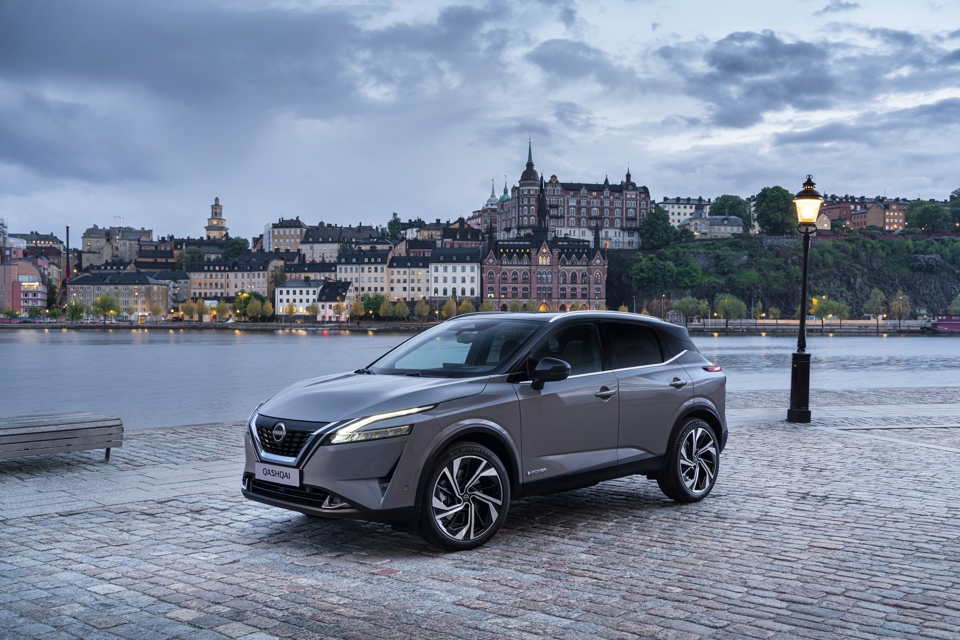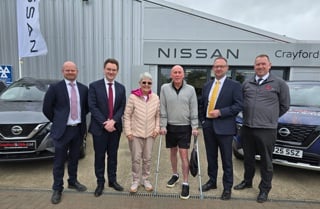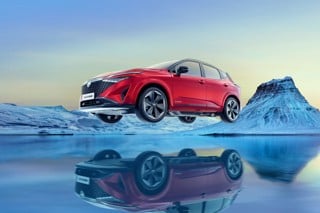Nissan’s hybrid Qashqai ads potentially misled car buyers because they failed to make clear that the car still required petrol, according to an advertising industry watchdog.
The Advertising Standards Authority (ASA) said the first TV ad, broadcast in May and September, featured stylised footage of a car driving through a city at night. In its opening shot, an electrical transmission tower threw off sparks as the car drove past it, while the voice-over stated, “Who said electrification can’t spark excitement when unplugged?”.
On-screen text stated “Fuelled By Petrol Driven By Electric” while a spark trailed the car through the streets while on-screen text stated, “No Need To Plug In”.
Nissan’s hybrid Qashqai ads potentially misled car buyers because they failed to make clear that the car still required petrol, according to an advertising industry watchdog.
The Advertising Standards Authority (ASA) said the first TV ad, broadcast in May and September, featured stylised footage of a car driving through a city at night. In its opening shot, an electrical transmission tower threw off sparks as the car drove past it, while the voice-over stated, “Who said electrification can’t spark excitement when unplugged?”.
On-screen text stated “Fuelled By Petrol Driven By Electric” while a spark trailed the car through the streets while on-screen text stated, “No Need To Plug In”.
As the voice-over said, “New Nissan Qashqai with e-POWER. A unique electrified experience, unplugged”, the spark leapt onto the “e-POWER” logo embossed on the side of the car, before tunnelling into the car’s motor through a stylised vortex with a close-up shot depicting the vehicle’s display screen featuring the text “Energy Flow”. The ad’s closing shots featured on-screen text that stated “New Nissan Qashqai with e-POWER, unplugged” and the Nissan logo.
The ad’s opening shots were accompanied by small on-screen text that stated “*e-POWER comprises a 100% electric motor-driven system, powered by a lithium ion battery and a petrol engine”.
A second TV ad, broadcast in late June, featured a voice-over, visuals and on-screen text that were similar including an additional closing shot whose visuals depicted The Flash, a DC superhero, running around two Nissan cars and leaving a trail of sparks in his wake. The accompanying voice-over stated, “Nissan Qashqai and X-Trail with e-Power. Get your own electrical superpower like The Flash”.
Four complaints challenged whether the ads made the nature of the vehicle’s power source sufficiently clear.
In its defence, Nissan Motor GB said that the ads made the nature of the vehicle's power source clear telling the ASA that there was nothing in the ads to suggest it was a new type of 100% electric vehicle that did not need charging and made clear that it was part of their “e-Power” range.
The car manufacturer said this was a unique system that was neither hybrid nor fully electric, but rather used a petrol engine and lithium-ion battery that powered an electric motor which turned the wheels. This was different from conventional hybrids where the wheels were powered by a petrol engine, electric motor, or a combination of both. Nissan said it did not believe that the technology should be described as “hybrid” and that it was a new technology that consumers needed to understand.
It told the ASA that the ads made clear that petrol was required for the vehicle to function, making it clear that the vehicle was not a 100% electric vehicle that needed charging.
“Given that they set out clearly that the car needed petrol to fuel an electric motor that powered the wheels of the vehicle all of the time,” the ASA said, “they strongly believed that they had not been misleading in explaining “e-Power” technology and all that information was added to help consumers to understand it.”
Nissan said that as there were no references to the vehicle being solely powered by electricity, and that there were no claims as to fewer emissions, they did not consider that consumers would believe that the car had fewer emissions.
Ad clearance agency Clearcast told the ASA that it believed the ad made clear how the car was powered and that it was not misleading. Although the ad referred to “electric” and “charging”, they believed it was acceptable to include these in an ad for a hybrid car because not needing to charge the advertised car was a legitimate point of difference between it and a fully electric car. Nonetheless, they recognised that they needed to make it clear in the advert that the advertised car was not solely powered by an electric battery to avoid confusion.
In its judgment, the ASA said it understood that the “e-Power” technology used an electric motor to drive the cars’ wheels, but that the electric motor was powered either directly by petrol, or from a battery that was recharged by petrol. Additionally, the car had a regenerative braking system that recharged the battery. “Therefore, whilst the car only drove using an electric motor, it nonetheless required petrol,” it noted.
“We considered that whilst viewers may have understood from those claims that the car required petrol, because they were alongside claims about the car being driven by electric and the ad as a whole strongly emphasised the role of electricity in the car, the extent of the role petrol had in powering the car was unclear.
“Further, because “e-Power” was a unique and new technology, most consumers would not be aware of how it differed from other forms of hybrid technology. We therefore considered that the ads did not make the nature of the vehicle’s power source sufficiently clear.”
“Furthermore, whilst the ad did not include any explicit claims in relation to the car’s environmental impact, we considered that by focusing on the car’s use of electricity, consumers were likely to understand that the car was a better choice for the environment than traditionally fuelled vehicles. However, because the ads did not make sufficiently clear the nature of the vehicle’s power source and because it required petrol to power the electric motor, which would produce tailpipe emissions, we considered that the ads were also misleading in this regard.”
It therefore concluded that the ads did not make sufficiently clear the extent to which the car required petrol and were therefore misleading. must not appear again in their current form and warned Nissan that future ads had to make sufficiently clear the nature of a vehicle’s power source.
Nissan told the ASA that said the ads at issue were no longer being broadcast, and that in future they would include additional wording to clarify that the car was not a fully electric vehicle and required petrol to fuel the electric motor.
Login to continue reading
Or register with AM-online to keep up to date with the latest UK automotive retail industry news and insight.





















Login to comment
Comments
No comments have been made yet.